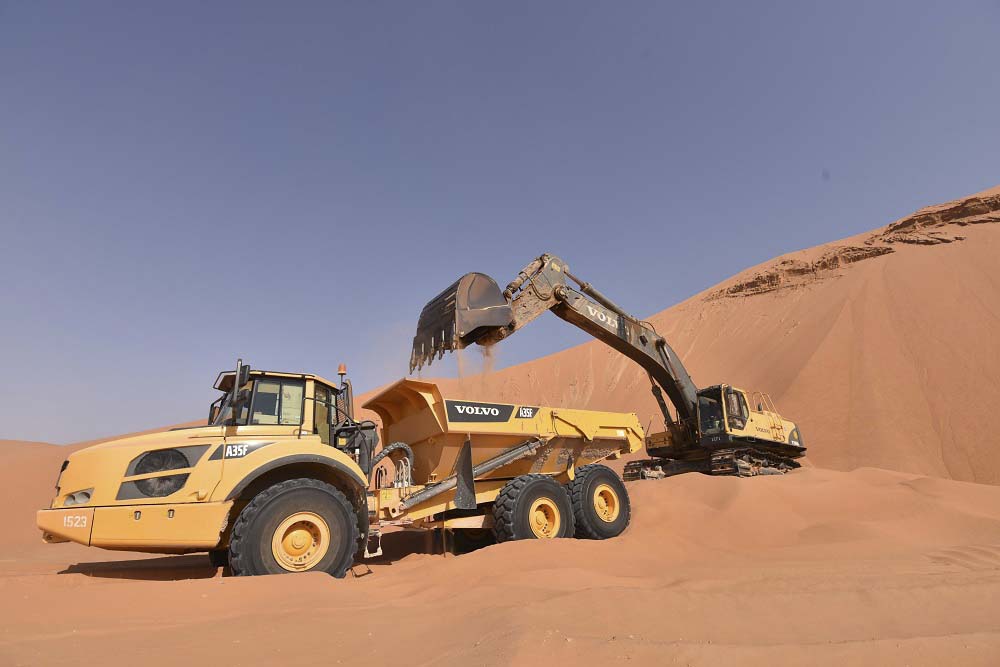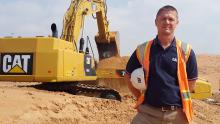
Construction market forecasts across the Middle East have again reached the dizzy heights from where all that’s planned can often appear too good to be true, or economically sustainable, writes Jon Masters.
Much of the investment now promised in the Middle East is related to government backed infrastructure and energy programmes. There is simultaneously an appearance of authoritative assurance and an air of uncertainty over delivery risks for construction, plant and materials supply chains.
The size and shape of the region’s market depends on which countries are considered to be within the region.
Economic performance and fortunes have differed considerably across the various Middle East countries, Fidan says. “Growth has come mainly from Saudi Arabia, but not from Turkey at present, although both are strong markets for equipment sales. Qatar is doubling in size for us, partly due to construction of stadia, infrastructure and residential development in preparation for the 2022 World Cup,” he says.
Qatar and other countries of the GCC (Gulf Cooperation Council) are pushing on with strategies aimed at restructuring their economies to relinquish them from dependency on oil revenues. This means building cities, commercial and residential developments, theme parks and a lot of supporting transport, energy and utility infrastructure.
The UAE (United Arab Emirates) in particular has increased investment over the past year and lined up a significant number of major project programmes to come. Central Asian countries are performing differently. “Uzbekistan has done well, while market growth in Azerbaijan has tailed off as the country has been preparing for an election while experiencing a devaluation due to a drop in oil prices,” Fidan says.
Overall the effect is modest growth across the Middle East and Central Asian markets, “perhaps up 2-3%”, for 2014/15, says Fidan. It’s a similar picture for companies that manage regional businesses including Africa and the Middle East. The African outlook on economic growth is mixed – with Morocco in particular standing out as a strong market for development – while the most promising numbers are coming out of the GCC countries.
For
“The sources or reasons for growth in these countries can be summarised as a great deal of infrastructure projects including housing for citizen welfare, Mecca and Medina City expansion developments, a high speed railway network and metro works in SA. In Qatar there are the World Cup related infrastructure projects. Oman also has road network and infrastructure projects for citizen welfare. Iraq is undergoing reconstruction while in Egypt there is construction of a second Suez Canal and a number of army sponsored infrastructure projects.”
Projects in Qatar include the Doha New Port and Ashghal Expressways programme to name just two, as well as the 2022 World Cup developments.
In Saudi Arabia, the city of Jeddah is being transformed via a strategic plan aimed at accommodating sustainable residential and commercial growth. Jeddah is the nearest port and airport gateway to the holy cities of Mecca and Medina. It has a population estimated at around 3.5 million.
The Jeddah plan includes development of 50,000 new homes per year and supporting infrastructure. This will include affordable housing for 1.2 million citizens currently living in unplanned settlements as well as development to accommodate a projected population growth that will add another 2.5 million people over 20 years.
According to Meed Projects, in 2013 the UAE was second only to Saudi Arabia (SA) in terms of contracts awarded. The UAE’s total of $44 billion, 60% of which was in the real estate sector, compares to SA’s $66 billion.
This 2013 figure represented a 37% increase on the previous year, Meed reported, but at the time there were already signs that 2014 would prove stronger still. The first quarter of 2014 was $700M higher than Q1 of 2013. Close to $50 billion of projects were expected to have been awarded before 2014 came to an end.
In Abu Dhabi, the UAE’s biggest oil exporter, a number of mega infrastructure projects are now under way, including Abu Dhabi Airports’ massive Midfield Terminal development. The centrepiece of the project is an impressive new airport terminal building that when finished in 2017 will contain 667,000m3 of reinforced concrete forming an enormous enclosed space of 700,000 square metres beneath a roof span maxing at 319m.
The transportation and energy infrastructure consultant Aecom has reported its latest 2014 Middle East Construction Survey. Industry performance was mixed during the year, the report says, with the market reliant on an improvement in the UAE construction sector. However, with much of the work in the region coming from government sponsored infrastructure and energy schemes, political instability has led to a stagnation of work in many Middle East countries outside the UAE.
The scaling back of Qatar’s 2022 World Cup stadiums and Doha Metro has affected construction industry confidence. Flow of new contract awards in SA has been slower than hoped over the past two years, according to Aecom, but several big housing and infrastructure programmes that have been delayed are expected to start in earnest over the coming year.
Transport is viewed as the dominant sector in the Middle East construction industry due to airport projects, roads programmes and metros in a number of major cities. Meed has reported $278 billion of transport projects in planning, according to Aecom. The firm’s survey confirms that Middle East construction is heavily dependent upon governments’ infrastructure plans for future growth.
The
There are potentially serious caveats to these forecasts. Security is a major factor, particularly in the non-GCC countries, as is the fiscal picture of falling oil prices and increased public spending. “A drop in oil revenue is likely to affect economic growth in Oman and other more oil dependent countries such as Algeria, Iraq, Libya and Yemen, but SA, Abu Dhabi and the other UAE emirates are less likely to be affected due to the diversification of their economies and continued investment in infrastructure,” says Ilkay Fidan.
This view is supported by the IMF outlook report, which also predicts that the major GCC oil exporters are likely to maintain revenues by increasing production to make up for disruptions in supply from non-GCC countries such as Iraq, Libya and Yemen. Growth in non-oil sectors is expected to remain high at about 6% in 2015, according to the IMF.
Rising government capital spending and public sector salaries, along with private sector credit expansion are supporting domestic consumption and investment. Public infrastructure megaprojects, especially in Qatar, SA and the UAE, are expected to continue to fuel strong expansion in tourism, transport and construction, the IMF reports.
The international ‘built asset’ consultancy EC Harris has also carried out analysis of Middle East major construction programmes and the likely risks to their delivery.
According to the firm’s report, more than 117 major project programmes – those valued at more than $1 billion – can be identified as planned for 2014-2030, totaling over $1 trillion. These include retail, real estate, leisure, health and education assets, as well as transport, communication and other infrastructure.
Risks to delivery are significant, however. According to EC Harris, an additional 1.2 million labourers and 135,000 professional staff will be needed in the region at programme peak up to 2019. Competition for labour, commodities, supply chain capacity and logistics poses real risks, as does the need for more developed health and safety regulation and welfare infrastructure to cope with the large influx of workers expected.
Priority actions recommended by the EC Harris report also include local investment in greater construction materials manufacture and transport logistics, as well as development of procurement strategies that can effectively manage risk.
Development of materials supply and logistics presents a significant issue. Qatar for example, relies almost entirely on imported materials.
For Volvo, the company’s annual supply of around 31,000 new machines into its Hub East region is expected to grow modestly, but the firm is gaining market share as it works to invest in expanding and helping its network of dealers. “All of our supply is via independent dealers in the region,” Fidan says. “Brand strength, quality and the right customer service and support all help market share.









